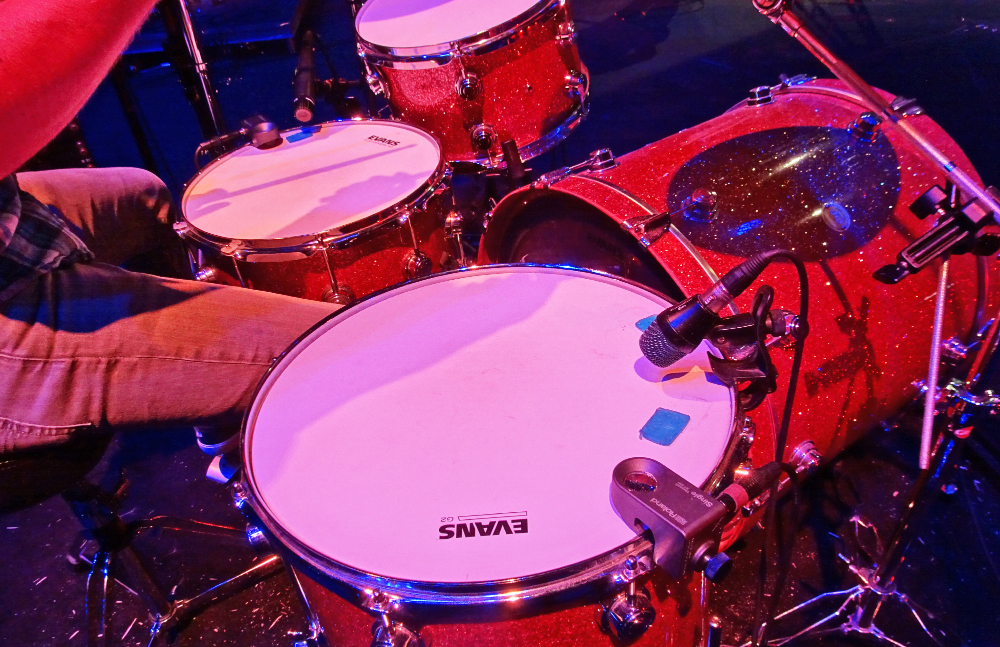The church where I serve has a large fan-shaped auditorium with a theatrical stage and a multi-instrument worship band consisting of both staff musicians and volunteers. Our drum microphone setup consists of a pair of overhead mics supplemented with close mics on specific drums. We gate each mic to keep the sound tight as well as to avoid interactions when two mics pick up the same drum or cymbal.
But the gates themselves can present difficulties when, for example, a tom mic is gated “on” by an aggressive cymbal hit. This causes at least two problems.
First, having the tom mic gate on at the same time as the overhead mic causes phasing issues. Second, the tom mic is equalized (EQ’d) differently than the overhead mic, and the two mics together result in an unpleasant cymbal sound.
One way to solve this problem is to use a purpose-designed acoustic drum trigger like the Roland RT-30H on the tom mic. We’ve adopted this method with good results. The RT-30H fits on the metal rim of the drum, triggers the gate accurately, and has survived well despite its dangerous location – better than some competitive devices we’ve tried. It can also trigger synthetic or hybrid drum sounds, but we’re not using it for that.
We connect the balanced TRS output of the RT-30H to a microphone input on our Allen & Heath dLive digital mixer. But the signal from the RT-30H never enters the audio mix – it’s only used to trigger the gate on the tom’s close mic.

The reason this works so well is that the RT-30H actually touches the drumhead and senses it’s mechanical vibration – not it’s acoustic sound wave. Thus, it won’t pick up even an aggressive cymbal crash because that’s transmitted acoustically. The results have been good enough that we’re now using the triggers for snare and upper snare as well.
However, instead of using an RT-30H on the kick drum, we deploy a pair of mics. One is inside the drum (the “in mic”), and the other is outside the drum (the “out mic”). The in mic is fairly isolated from other drum sounds so we use it to trigger the gates on both mics (and both feed the mix). Note, however, that this works well on the kick but may not be adaptable to other drums.
It’s always challenging to mix a band like this while maintaining consistency for a live stream and meeting the goals of meaningful live worship in the auditorium. And drummers present a special challenge because this week’s player may have a very different style than the one who played last week, requiring adjustments not only in the mix but in microphone gate levels.
This is where the acoustic drum triggers bring another benefit. They simplify the mix by reducing the need to adjust gate trigger levels from one drummer to the next.




















